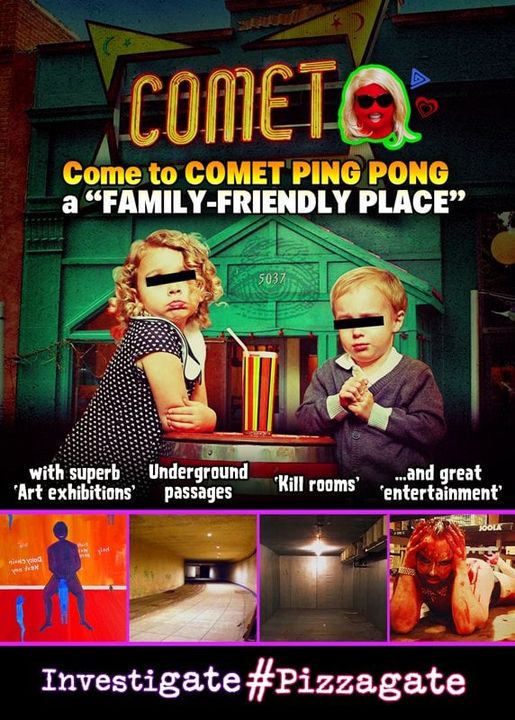To understand how the mystical races of dragons, fairies, and elves became enshrouded in legend, we must enter the Twilight Realm of the Shining Ones—the ancient overlords of the Ring tradition. These beings were not mere figments of imagination but rulers of the earth, wielding authority through wisdom, magic, and the divine legacy of the Grail Bloodline. Yet, as the shadows of history lengthened, their true nature was obscured, transforming them into creatures of folklore and fantasy. This narrative shift was no mere coincidence, but a deliberate act of political and spiritual subterfuge linked to the Donation of Constantine.
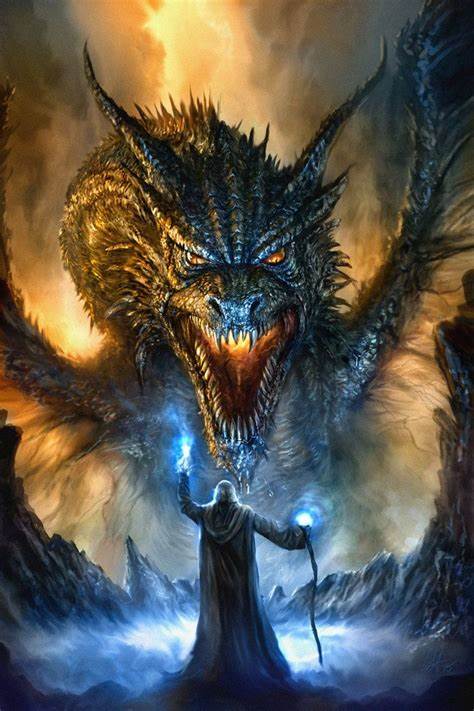
The Shroud of Enigma and the Donation of Constantine
The Donation of Constantine was a forged decree purportedly granting the Pope dominion over the Western Roman Empire. It justified the Church’s temporal power, simultaneously undermining rival sovereign lines, particularly the Grail Bloodline—descendants of the Shining Ones. By claiming divine authority, the Church reframed the Ring Lords not as enlightened rulers but as supernatural entities opposed to Christian doctrine. This political maneuver effectively marginalized the Dragon Kings, recasting them as mythical beasts, malevolent sorcerers, and occult creatures.

In 1440, Italian priest, humanist, and orator Lorenzo Valla authored De falso credita et ementita Constantini Donatione declamatio, demonstrating through historical and linguistic analysis that the Donation of Constantine was a forgery. Due to opposition from the Church, his work remained unpublished in print until Ulrich von Hutten’s 1517 edition. The text gained widespread popularity among Protestants, with an English translation commissioned by Thomas Cromwell in 1534. Valla’s argument was so compelling that his conclusions remain accepted today, with the Donation of Constantine universally recognized as illegitimate.
Valla proved that the document could not have originated during the reign of Constantine I (4th century), as its linguistic style clearly pointed to a later period, specifically the 8th century. One key indicator was the inclusion of the word satrap, a term Valla argued would not have been used by Romans of Constantine’s time. His meticulous scholarship not only exposed one of history’s most infamous fabrications but also marked a significant moment in the development of historical and textual criticism.
The Realm of the Shining Ones and the Ring Lords
To comprehend the Shining Ones, we must first explore their realm. Known as the Twilight Realm, it was a domain of enlightenment, existing at the threshold between the physical world and the ethereal plane. These beings were the Ring Lords, guardians of the ancient wisdom encoded within the Grail mysteries. Their power was derived not from physical might but from spiritual insight and magical knowledge, symbolized by the Golden Ring—a talisman of sovereignty, love, and enlightenment.
Unlike Tolkien’s One Ring of dominion and darkness, the Golden Ring of the Shining Ones was a source of unity and divine harmony. It was the Ring of Sovereignty, binding the king to the land and the people, maintaining cosmic balance. This concept was later romanticized in Arthurian legend as the Round Table—an unbroken ring signifying equality and divine rule. However, the corruption of this principle, as illustrated by King Arthur’s betrayal of the Celtic Code, shattered the ring’s power, plunging the land into chaos.
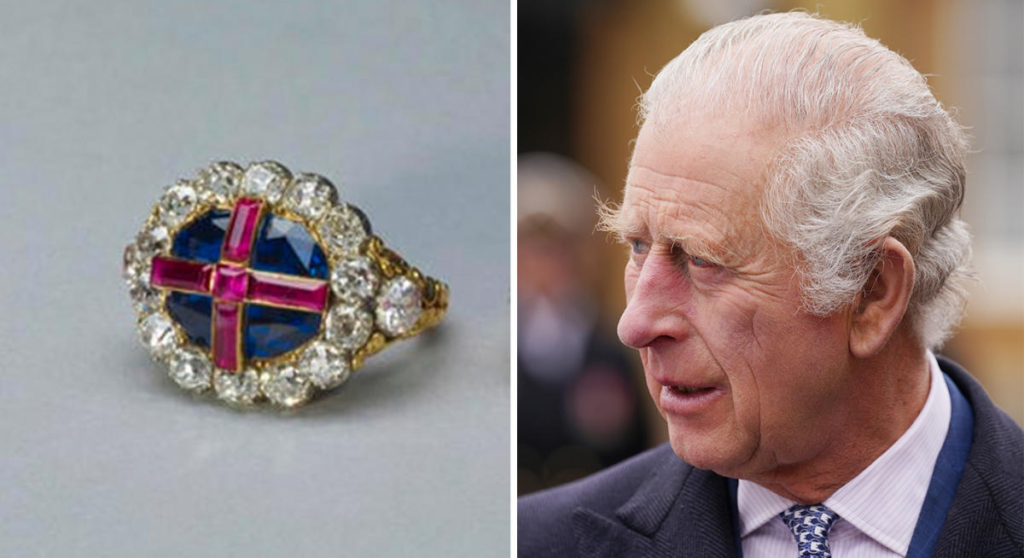
The Sovereign’s Ring, an essential part of the Crown Jewels, is steeped in symbolism and tradition. Originally crafted in 1831 by Rundell, Bridge & Rundell for the coronation of King William IV, this magnificent piece of regalia features a large central sapphire adorned with baguette-cut rubies in the form of a cross. The design echoes the Union flag, where the sapphire represents the Cross of Saint Andrew (Scotland) and the rubies symbolize the Cross of Saint George (England), signifying the unity of the realm under a divinely sanctioned monarch.
This ring of power and authority carries echoes of a much older tradition—the Golden Ring of the Shining Ones, a mystical symbol of sovereignty, unity, and divine harmony. In ancient belief systems, this sacred ring was more than a mere ornament; it was a conduit of celestial authority, binding the king to both the land and the people while ensuring cosmic balance. This concept of a sacred ring of kingship was later woven into Arthurian legend, most famously embodied in the Round Table—a perfect, unbroken circle signifying equality, divine justice, and rightful rule.
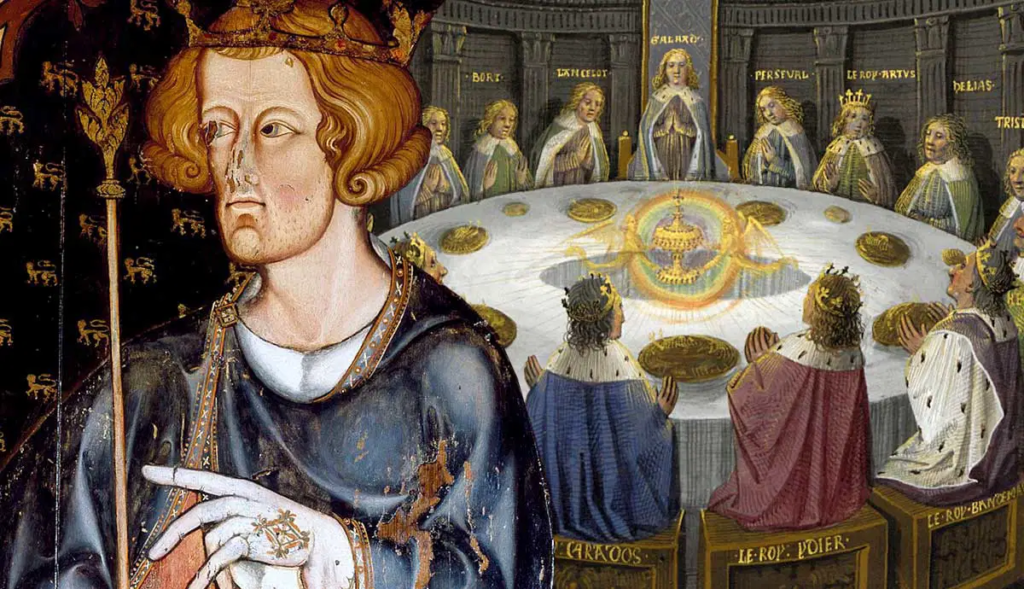
However, as with all sacred relics of power, the ring’s influence was not invulnerable to corruption. According to legend, when King Arthur betrayed the Celtic Code—an ancient system of honor, kingship, and divine order—the integrity of the sovereign ring was shattered. With its dissolution, the balance between king and kingdom crumbled, casting Britain into chaos and decline. This moment of fracture, symbolized in myth as the fall of Camelot, mirrored the very real struggles of medieval rulers to maintain the sacred bond between sovereignty and the land.
The Sovereign’s Ring, much like the ancient rings of kingship before it, continues to serve as a potent emblem of authority and legitimacy. When placed upon the monarch’s finger during coronation, it is not merely an adornment but a reaffirmation of an age-old covenant—one that binds ruler, realm, and the divine in an unbreakable pact of service and guardianship.
The Misrepresentation and Fall of the Dragon Kings
The deliberate misrepresentation of the Shining Ones was a strategy to sever their connection to divine authority. Their wisdom was recast as witchcraft, their magic as heresy. The Christian Church waged war against the Grail Bloodline, branding them as sorcerers and vampires—beings who fed on the life force of the faithful. This vilification is most evident in the evolution of the term Oupire, which meant “Overlord” or “Superintendent” in Scythian, but was later distorted into the malevolent Vampire.
This transformation was not merely linguistic but symbolic of a greater cultural excommunication. The Shining Ones, once venerated as Overlords of the Sidhé—guardians of the earth’s hidden energies—became demonic outcasts. The Church’s witch-hunts targeted those who preserved this ancient knowledge, branding them as heretics and witches. The elves and fairies were relegated to the realm of children’s stories, stripped of their historical significance as the Noble Houses of the Dragon Lineage.
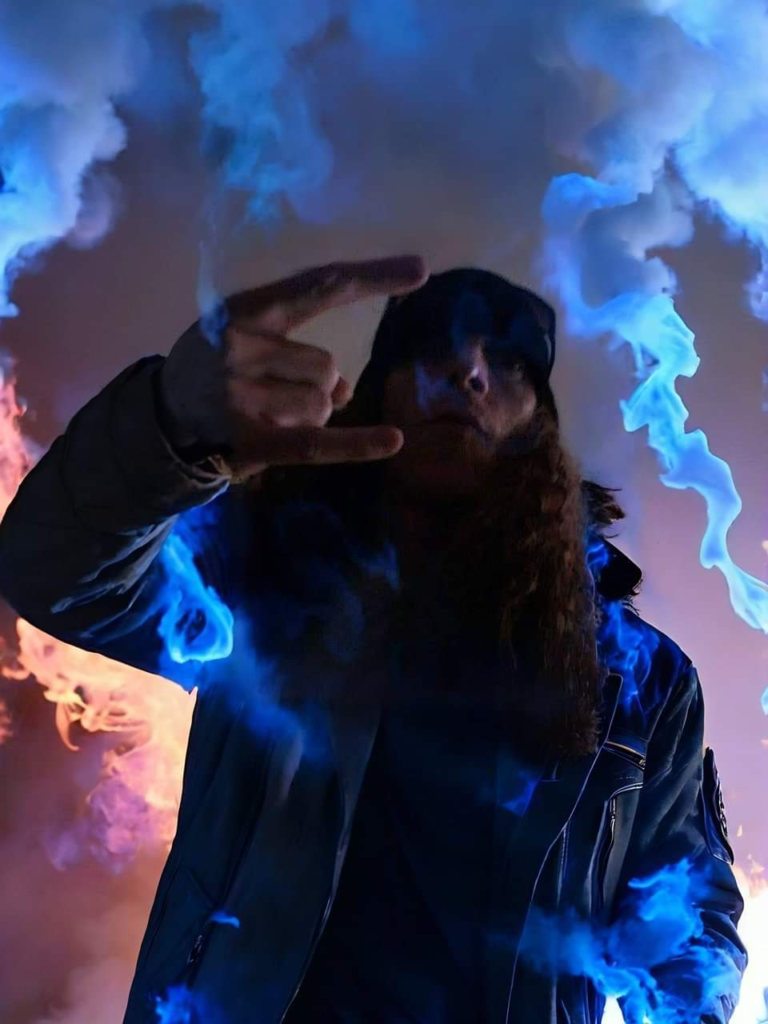
The Guardians of the Bloodline
Despite these efforts, the Grail Bloodline endured, safeguarded by secret societies and noble families who preserved the legacy of the Ring Lords. These guardians were the descendants of the Tuatha Dé Danann, the Dragon Lords of Anu, whose bloodline traced back to the Pendragons of Mesopotamia. In Europe, they became the royal houses of the Bruithnigh, Picts, and Gwynedd, ruling over the mystical lands of Ireland, Scotland, and Wales.
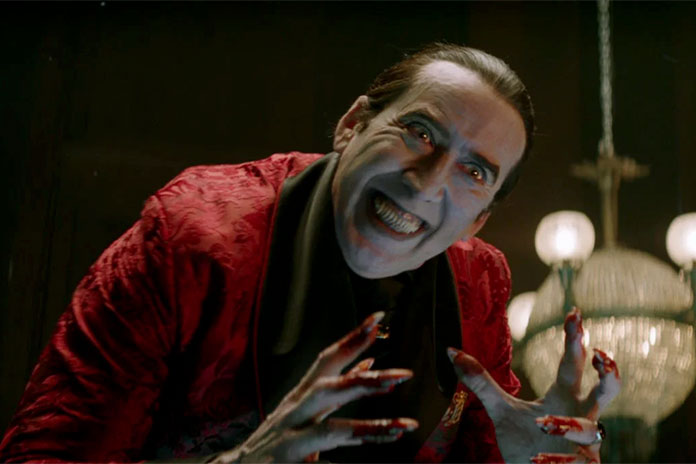
The true nature of these beings was preserved in allegory and symbol, hidden in plain sight within fairy tales and nursery rhymes. Sleeping Beauty, Cinderella, Snow White, and Rapunzel are not merely fantasies but encrypted accounts of Grail Princesses imprisoned by the Church’s orthodoxy. These stories reflect the eternal struggle between the Bloodline Princes and the false kings who usurped their throne.
Tuatha Dé Danann: My Magical Divine Ancestry
This piece delves into the fascinating parallels between the Watchers of The Book of Enoch, the Anunnaki of Sumerian mythology, and the Tuatha Dé Danann of Irish legend, all of whom are depicted as supernatural or divine beings descending from the heavens onto sacred mountains. The shared motif of gods arriving from above and settling in elevated, mystical locations—such as Mount Hermon, Kharsag, Mount Olympus, and Mount Meru—suggests a recurring theme in ancient traditions that links divine descent with high-altitude domains.
The Tuatha Dé Danann who legend has it had red hair, were renowned as masterful magicians and warriors, wielded what appears to be advanced technology, employing cloaking abilities in battle, energy-based weaponry, and even the power of flight. The legends surrounding their conflicts with the Firbolgs and the Fomore, particularly the battle with Balor, hint at sophisticated weaponry reminiscent of modern laser or directed-energy weapons. Balor’s devastating “flux of energy” and his massive, destructive eye—described as requiring metal hooks to remain open—strongly suggest an artificial or mechanical nature, possibly even a weaponized device rather than a biological feature. The alleged vitrification of Tory Tower, Balor’s stronghold, further raises questions about the kind of energy weaponry that may have been involved in these mythic conflicts.
My 83rd great grandmother, Dôn verch Mathonwy de Gales, also known as Danu, stands as a luminous figure in ancient Celtic tradition, deeply rooted in the mystical lineage of the Tuatha Dé Danann. As the daughter of Mathonwy of the Danaans, she was revered as a powerful matriarch, a prophetess, and a divine embodiment of wisdom and sovereignty. Born in 115 AD in England, she was known by many names throughout history—Anna the Prophetess, Anna the Great of the Druids of the Celtic Britons, and Princess of Cornwall—each title reflecting her profound influence across different cultures and eras.
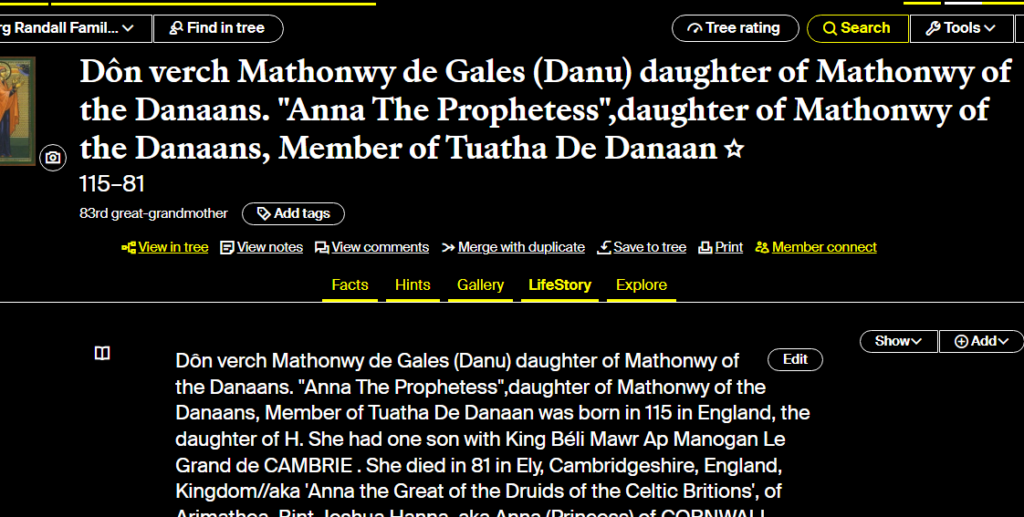
Dôn was not only a descendant of the mystical Tuatha Dé Danann but also an essential link in the royal bloodline of the ancient Britons. Her union with King Béli Mawr Ap Manogan Le Grand de Cambrie strengthened the connection between the sacred druidic traditions and the ruling dynasties of early Britain. As a mother, she passed down the esoteric knowledge of the Druids and the spiritual legacy of the Celtic gods, ensuring that the divine wisdom of her people endured through generations.
In Welsh mythology, Dôn is often depicted as the mother goddess of the Children of Dôn, a pantheon of deities associated with magic, the stars, and sovereignty. She was believed to be the divine counterpart to the Irish Danu, the great mother of the Tuatha Dé Danann, from whom the mystical race of gods and rulers derived their name. This sacred lineage suggests that Dôn was not only a historical figure but also a deity venerated for her role in shaping the spiritual and royal destiny of the Celtic lands.
Her passing in 81 AD in Ely, Cambridgeshire marks an enigmatic chapter in the ancient history of Britain. Some legends intertwine her story with the holy lineage of Arimathea, linking her to sacred Christian traditions, while others emphasize her druidic wisdom and her role as a bridge between the old gods and the emerging Christian faith. Whether as a historical queen, a prophetess, or a goddess, Dôn verch Mathonwy’s legacy remains immortal in the mythologies and ancestral memory of the Celtic world.
My holy grail royal family lineage as a last in line red head of the divine Kingship has been handed down to me through many generations of Kings, Pharaohs and Emperors I learned, such as my 73rd great grandmother Cleopatra, Queen of the Nile.
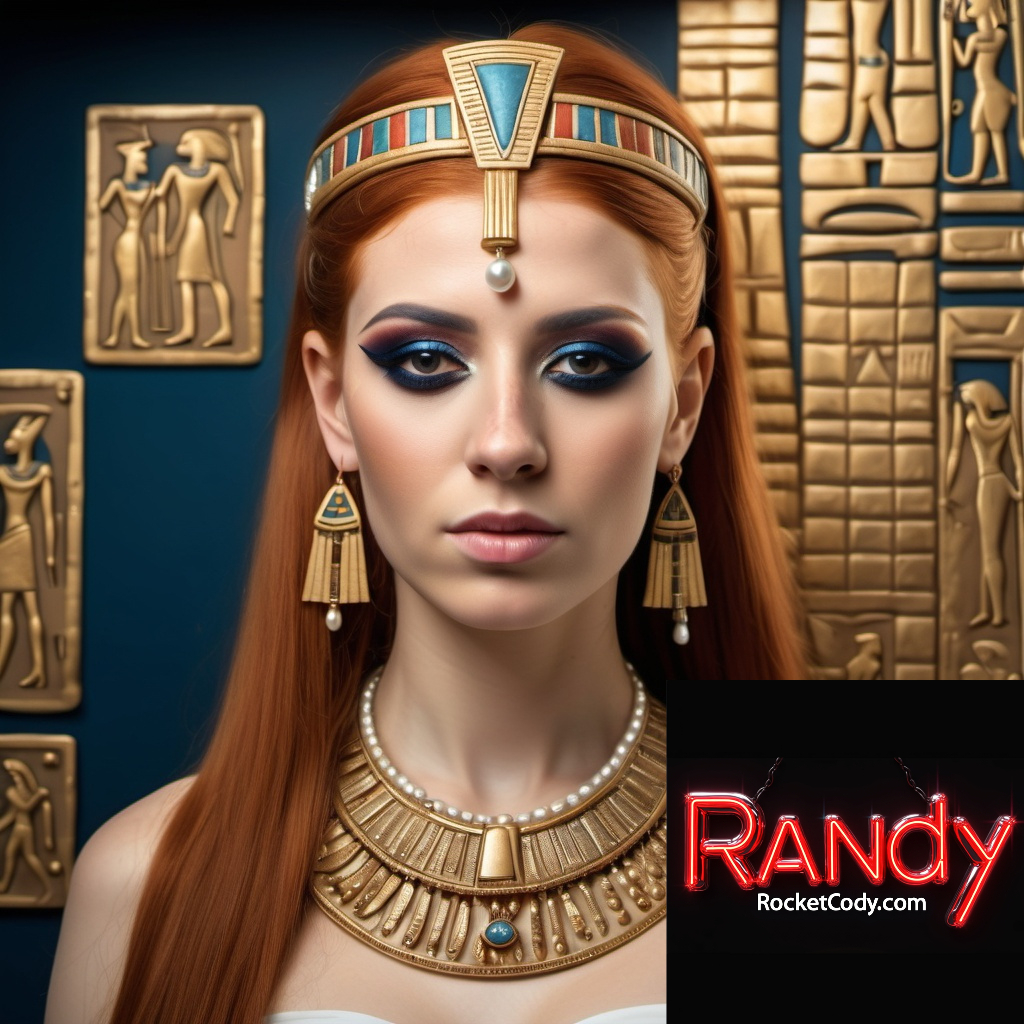
As the story goes, A Merovingian King whose red hair was cut could not rule, and a rival could be removed from the succession by being tonsured and sent to a monastery. The Merovingians also used a distinct name stock. One of their names, Clovis, evolved into Louis and remained common among French royalty down to the 19th century.
My royal lineage, as revealed through DNA testing on Ancestry.com, connects me directly to some of the most significant kingship lines beyond the long red-haired Merovingian/Fisher Kings mentioned in The Da Vinci Code. Among these is the storied Clan Campbell/McArthur, which carries a powerful historical legacy—including descent from the legendary King Arthur himself, making Arthur my 41st great-grandfather.
The McArthur name is particularly notable in relation to the fabled lineage of King Arthur. Some traditions suggest that the McArthur clan safeguarded the true bloodline of the legendary monarch, preserving a direct connection to Britain’s most famous king. The idea that this sacred lineage endured through the century’s ties into broader themes of divine kingship and the right to rule, a concept deeply embedded in Celtic and medieval traditions.
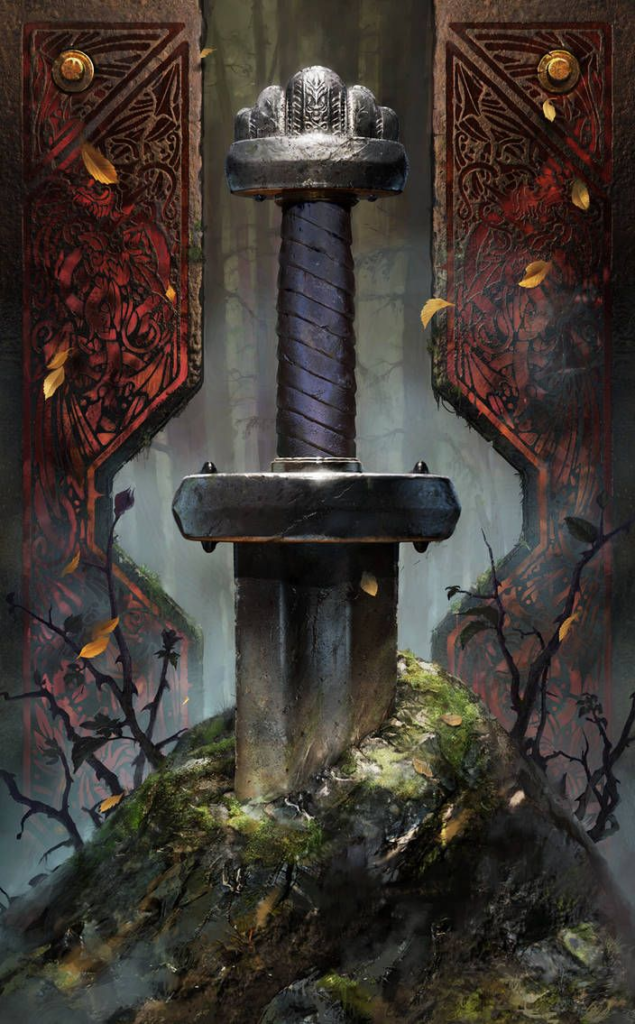
King Arthur’s father, Uther Pendragon—my 42nd great-grandfather—was a pivotal figure in early British history and mythology. Often associated with the mystical and druidic traditions of pre-Saxon Britain, Uther appears in various ancient Welsh texts, including The Book of Taliesin, which may date as far back as the sixth century. He is described as the son of Custennin the Blessed and the brother of Ambrosius Aurelianus (Emrys Wledig), figures tied to post-Roman resistance against Saxon invasions. The name “Pendragon,” meaning “Chief Dragon” or “Head Dragon,” signifies a title of supreme military leadership, reinforcing my family line’s historical and legendary stature.
This royal legacy is further reflected in the enduring symbolism of the Stone of Scone, an ancient coronation stone used for centuries to crown Scottish and later British monarchs. The stone, shrouded in legend, has origins that some trace as far back as Palestine 3,000 years ago, while scientific analysis suggests it is of Scottish origin. The English seized the Stone of Scone in 1296, and it remained in Westminster Abbey for 700 years before its return to Scotland in 1996. This sacred artifact played a central role in the coronation of King Charles III in 2023 and has long been associated with divine sovereignty—its presence signifying the legitimacy of kingship.
Additionally, the Tuatha Dé Danann’s technological marvels—such as their self-sailing ship Ocean-sweeper, the transforming Magical Rod, and the Steed Aonbarr that traversed both land and sea—align with descriptions of high-tech artifacts frequently attributed to ancient deities across various cultures.
The enigmatic Lia Fáil, or Stone of Destiny, is said to have roared upon the election of a true king, hints at an advanced, possibly interactive, artifact with properties not fully understood even today.
Even more intriguing is the suggestion that the Tuatha Dé Danann, rather than being completely vanquished or disappearing, may have retreated to underground sanctuaries, accessible only through sacred mounds. This ties into widespread myths of subterranean realms inhabited by divine beings—whether it be the Celtic sidhe, the hidden world of Agartha, or the underworld kingdoms of other mythologies. Some traditions even propose that remnants of the Tuatha remained on the surface, later becoming the revered Druids, continuing to pass down their esoteric knowledge in secret.
The idea that these figures represent not mere myths but potentially memories of an advanced race—whether extraterrestrial, interdimensional, or a lost civilization—is a theory that continues to intrigue researchers. The similarities between the Tuatha Dé Danann and the luminous, celestial beings described in Enoch’s writings further reinforce this possibility. The motif of shining gods, whose radiance was too intense for mortals to gaze upon, recurs not only in Irish mythology but also in countless other traditions around the world, lending further weight to the notion that these were not mere stories, but recollections of encounters with something extraordinary.
According to early Greek histories, the ancient city of Troy was in fact founded by settlers from Arcadia. Arkades means “people of the bear.” The constellation Ursa Major means “Great Bear.” It is in Beta Ursa Minor that Kochab the Mormon home of Lucifer resides. The Welsh word for bear is “Arth” from whence the name Arthur derives. Thus, in part, the significance of the Holy Grail and King Arthur related to the Merovingians.
The area of Maine around Bar Harbor known as Arcadia is said to be a remnant of the lost continent of Atlantis which was the past home of the Anunnaki on Earth, and where I learned the Children of Judas, a clan of Vampires hid out pre flood.
Napoleon commissioned a complete genealogy of the Merovingians to determine whether or not their bloodline had survived the fall of the dynasty. They themselves claimed descent from Noah, and a direct descent from Troy, which would explain the occurrence of names such as Paris and Troyes in France. It would also explain their link to ancient Greece, and specifically to the region known as Arcadia.
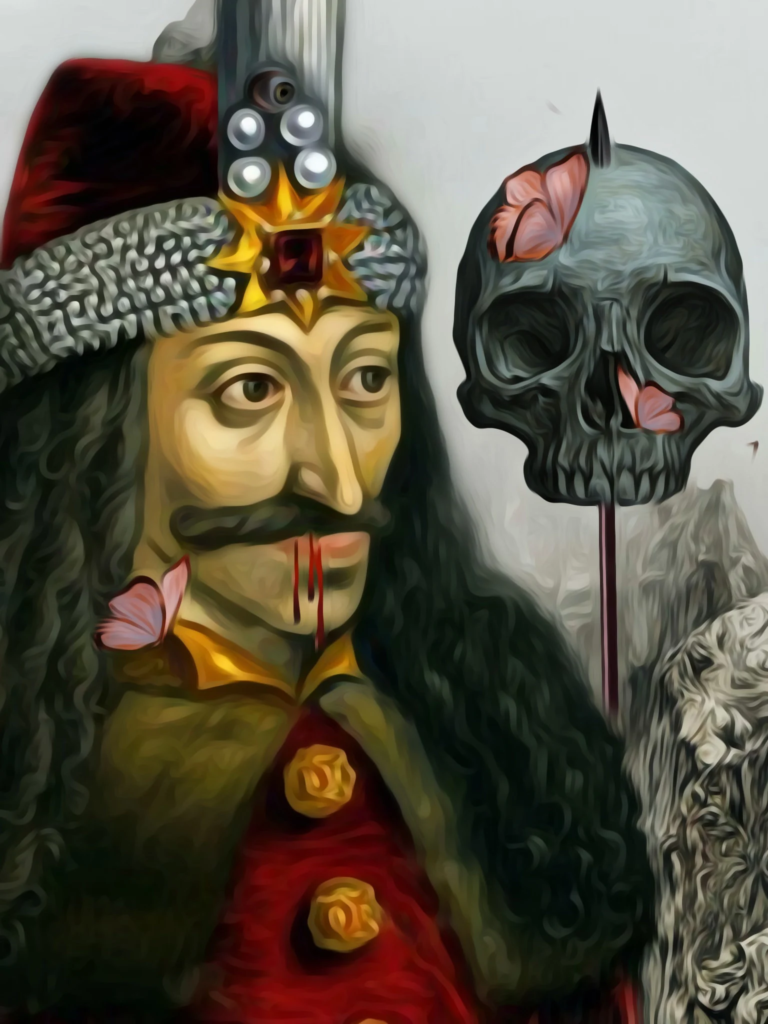
HOW THE ROYAL FAMILY IS LINKED TO COUNT DRACULA
Did you know that Vlad The Impaler, the basis for Count Dracula is related to Britain’s royal family both genealogically and through a medical condition that gives sufferers a thirst for blood?
It is believed that Queen Mary, consort of George V, was related to the 15th Century slayer Vlad the Impaler, who was also known as Dracula. Vlad is said to have dispatched more than 100,000 Turkish warriors in battle. The vampire legend was fed by his predilection for eating bread dipped in his victim’s blood.
And it is known that porphyria, an iron deficiency, which is thought to lie behind the vampire myth and may have spurred Vlad’s taste for blood, has run in the Royal Family.
The 20th Earl of Oxford, Aubrey de Vere, was also the last Earl to be a member of the Privy Council. In these positions they were close advisors to many kings and queens of England and were surrounded by families as Cavendish, Cecil, Spencer, Stuart/Stewart, Arundel, Plantagenet, and others. In many cases these families intermarried.
The leaders of several genealogical organizations have been recruited in the Pilgrims of the United States. Among them are the Order of the Crown of Charlemagne and the Order of the Merovingian Dynasty.
In respect to blood drinking, David Icke is very clear:
“The Anunnaki drink blood, which they need in order to exist in this dimension and hold a human form. Embedded in this need lies another parallel between the Anunnaki and the figure of the vampire – the power to shape-shift (from reptilian to human form for the Anunnaki, and usually from vampire form to that of bat or even mist for the traditional vampire). But the Anunnaki also feed off fear, aggression, and other negative emotions. Thus, while blood is needed as a vital life force, the Anunnaki are also addicted to “adrenochrome,” a hormone released in the human body during periods of extreme terror. Rather than sucking the blood directly from the necks of their victims, the Anunnaki apparently slash the throats of their victims from left to right and consume the blood out of goblets. Icke claims that the origin of the vampire stories are the blood drinking and “energy sucking” rituals of the Anunnaki.”
The Return of the Shining Ones
The narrative of the Ring Lords is not merely ancient history; it is an ongoing saga of spiritual sovereignty and enlightenment. The Shining Ones, guardians of the Golden Ring, are destined to rise again, restoring balance to a world fragmented by dogma and deceit. As the veil of illusion continues to lift, the truth of the Grail Bloodline and the Twilight Realm of the Shining Ones will once more illuminate the path to divine kingship.
To understand this legacy is to step beyond the Portal of Enchantment into the timeless realm of the Shining Ones—where myth and history converge, and the Grail Quest continues.
This ancient and esoteric tradition of the Star Fire ritual reveals a long-lost secret of kingship, divinity, and the sacred transmission of power through bloodlines. The Anunnaki bloodline, revered and carefully maintained through history, was intrinsically tied to the mystical elixirs of longevity, wisdom, and supreme rule. Women of this lineage—the Flow-ers—were central to this process, as they carried the divine essence needed to sustain the sacred rulers of the earth.
The Star Fire, derived from the menstrual blood of these priestesses, was known as the “nectar of the goddesses,” a powerful substance believed to awaken higher consciousness and grant those who consumed it heightened spiritual and cognitive abilities. The red cross within a circle, a symbol still found in royal and esoteric traditions, represented this divine nectar contained within the “Dew Cup.” Those who partook of the Star Fire—descendants of Cain, the dragon kings, and the serpent rulers—were marked by this cosmic legacy.
The Merovingian kings of France, also known as the Fisher Kings, were among the last ruling bloodlines to openly claim descent from this Anunnaki kingship tradition. Their Grail lineage was preserved through rituals linked to the Order of the Swan, the Order of the Serpents, and the Kings of the Grail Dew Cup, all of which maintained the ancient mysteries of sovereignty. Even today, remnants of this secret wisdom are found in Freemasonry, where the lost secret of kingship may very well be the forgotten Star Fire rites.
At the core of this tradition is the Pineal Gland, or “Third Eye,” which was stimulated through the ingestion of Star Fire and the Plant of Birth. The Sumerians, under the guidance of the Priests of Anu, perfected the medical science of these substances, ensuring that the ruling Anunnaki bloodlines retained their divine faculties. Even the Caduceus, the modern emblem of the American Medical Association, with its coiling serpents around a central staff, symbolizes this very process—the spinal column as the tree of life, the two entwining serpents as the currents of divine energy, and the wings at the top representing the brain’s ventricles and the awakened Pineal Gland.
When the Anunnaki departed, the sacred elixirs became scarce, and the ruling priesthoods sought to continue the tradition through controlled breeding programs, producing hybrid Anunnaki women to maintain the supply of Star Fire. Over time, these women—once venerated as Virgin Priestesses, Ladies of the Water, and Temple Queens—were gradually degraded in history as mere “temple prostitutes” or “scarlet women.”
The legacy of the Star Fire can still be traced in hidden symbols throughout history. The “Red Gold of the Golden Star Fire,” known in the ancient world as Ritu, signified both the divine nectar and the power of the serpent kings who partook of it. The goddess Kali, depicted as both red and black, mirrors this dual nature of creation and destruction, life and death, wisdom and chaos.
Even in the Hebrew tradition, the Serpent of the Garden of Eden—often associated with Lord Enki, known as Samael—is portrayed as offering knowledge and divinity through the forbidden fruit. When Adam and Eve partook, Jehovah (Enlil) lamented, “Behold, the man has become like one of us.” This cryptic statement suggests that consuming the fruit activated the dormant Anunnaki genetic potential within humanity, a concept that aligns with the teachings of the earliest mystery schools.
The Plant of Birth, linked to Star Fire and pineal gland activation, was a fundamental part of the ritual of kingship. King Etana of Kish, a direct descendant of Cain, is said to have consumed the Plant of Birth to ensure his lineage continued through his son, King Baali. This sacred ritual was a means of preserving the divine right to rule, which was upheld for millennia by those who carried the Anunnaki bloodline.
Although the ancient Star Fire is no longer available in its original form, the human pineal gland still holds the potential to unlock this forgotten power. Through spiritual awakening and genetic memory, the Anunnaki heritage within us can be reactivated, allowing those of the sacred bloodline to reclaim the wisdom and sovereignty once possessed by the great kings of old.
To read more of Rocket’s acclaimed #Truth reporting, check out:



